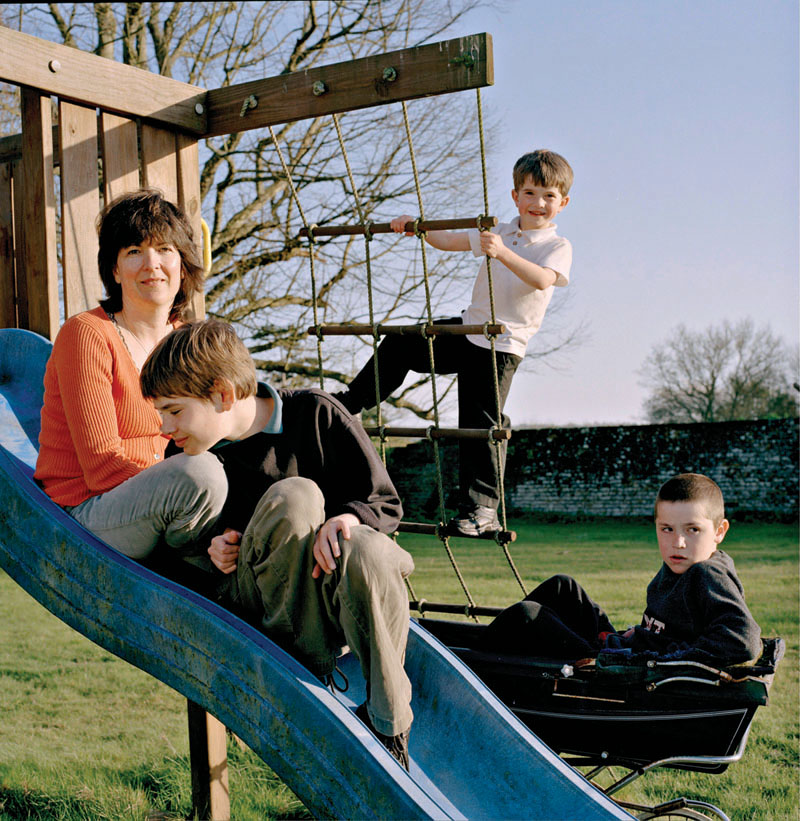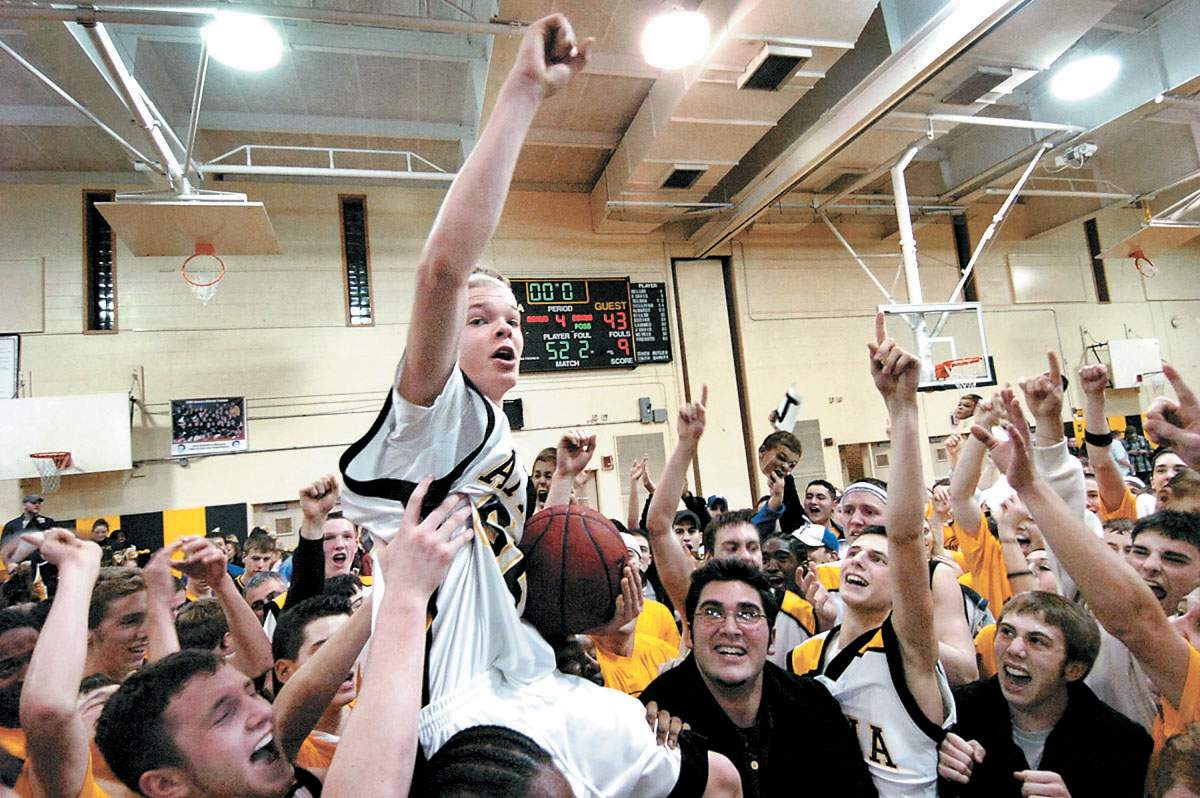14.2 Autism Spectrum Disorder
Richie Enriquez exhibits some behaviors that are not typical of people diagnosed with intellectual disability: He avoids making eye contact, hardly smiles, and can spend hours playing with a glittery plastic ball. When his mother takes a toy away from him, perhaps because it’s time for lunch, he has a nuclear-sized temper tantrum: “He screams, he cries, he hits his head against the wall…. I don’t know what to do. When I try to hold him, to comfort him, it seems to make things even worse. I’ve never seen a child like him.” His father notes that “if the evening routine—dinner, bath, three books, bed—varies, if I forget to read the third book, Richie freaks out, rocking himself and screaming. And he has no interest in playing with Javier and Pia—even though they try so hard to get him to play or to laugh.” From these descriptions, Richie’s behaviors sound like symptoms of autism spectrum disorder.
What Is Autism Spectrum Disorder?
Autism spectrum disorder (ASD) A neurodevelopmental disorder characterized by deficits in communication and social interaction skills, as well as stereotyped behaviors and narrow interests.
Autism spectrum disorder (ASD) is characterized by deficits in communication and social interaction skills, as well as stereotyped behaviors and narrow interests. The term spectrum is used because people with the disorder may differ in the severity of the symptoms and in their developmental level relative to their chronological age. The term autism by itself does not capture the range of variations that can occur. As noted in TABLE 14.4, the DSM-5 criteria include problems with social communication and interaction: difficulty with normal back-and-forth conversations or even initiating social interaction, poor eye contact, difficulty using facial expressions and body language as a means of communication, difficulty understanding the social communication of others, and difficulty developing and maintaining age-appropriate relationships.
|
| Reprinted with permission from the Diagnostic and Statistical Manual of Mental Disorders, Fifth Edition, (Copyright ©2013). American Psychiatric Association. All Rights Reserved. |
Like children with intellectual disability (but unlike other children), children with ASD (1) are much more or much less reactive to sensory stimuli, (2) engage in very repetitive play, and (3) often display stereotyped behaviors (such as flapping their hands). These children insist on repeating the same behaviors or activities for much longer periods than other children do. People with ASD also become distressed when certain routines are not carried out or completed, as was Richie when his father varied the evening activities in any way; to calm themselves down, they may rock themselves, as did Richie. To diagnose ASD, these symptoms must impair the ability to function on a daily basis.
ASD is caused primarily by neurological abnormalities and dysfunctions (Ecker et al., 2012; Kundert & Trimarchi, 2006). Symptoms of ASD usually become evident during infancy or early childhood, and many children also have comorbid intellectual disability, which may be true of Richie. Children for whom intellectual disability is the only psychological disorder usually look people in the eye, and they tend to respond when hearing their names and to smile at other people. In contrast, children with ASD—with or without intellectual disability—generally avoid eye contact and shy away from social interactions. (DSM-IV, the previous version of DSM, contained two separate disorders—autistic disorder and a milder form, Asperger’s disorder—that have been combined in DSM-5, in part because research suggests that they have related symptoms and etiology; Towbin et al., 2002.)
People with ASD tend to be oblivious to—and so appear to ignore—others. Younger children with ASD appear to be uninterested in making friends. Some older children may want to make friends, but they don’t understand the basic rules of social interaction; thus, their attempts are unlikely to be successful. To understand how symptoms of ASD translate into daily life, consider the following list of “peculiarities” that a mother compiled about her 4-year-old son, George, before he was diagnosed with autism (Moore, 2006, pp. 94–95):
- He talks [by reciting] quotations and by imitating adult speech.
- Has poor social interaction. Doesn’t know how to play with others.
- Avoids eye contact with strangers.
- He is very excitable (easily aroused, not easy to calm).
- He complains about strong stimuli, such as the sun, loud noises.
- Abnormalities of attention, including the ability to shut people out and be absorbed in something trivial for a long time.
- Loves nature, will stand and look at the moon for as long as he is allowed, despite freezing weather.
- Has a strong aversion to strangers, groups, and crowds.
- Obsessive.
- Ritualistic.
- Lines up [Lego bricks or matches them by color, but] doesn’t build. Always destroys.
- Occasionally plays with feces.
- Doesn’t dress or undress—just beginning to put on trousers and coat.
- Could recognize simple words at twenty months.
- Has a strong reaction to colors.
- Never asks questions except where is Mummy, Daddy, Sam.
- Only just starting to correlate facial expressions of others to emotion.
These behaviors might not be that unusual for a 1-year-old, but they are definitely not typical for a 4-year-old. The items on George’s mother’s list span the problem areas that are the hallmarks of ASD: impaired communication and social interactions and restricted and repetitive behaviors. Some of these problem areas—symptoms of ASD—overlap with symptoms of schizophrenia that arises during childhood: playing with feces, not dressing oneself, and becoming very upset in response to unwanted change. However, symptoms of ASD are present in early childhood (e.g., before age 3), as was true of George, and symptoms of childhood schizophrenia typically emerge later, after normal development.

DSM-5 also specifies three levels of severity of ASD, each of which is associated with different levels of required support. The least severe level requires some support, and the most severe level requires very substantial support.
When assessed with an intelligence test that measures both verbal and visual abilities, many people with ASD are also diagnosed as having intellectual disability. When researchers use an intelligence test that does not rely on verbal instructions or responses, however, intelligence scores of people with ASD are often significantly higher—in or above the average intelligence range (Dawson, Mottron, et al., 2005). Moreover, unlike people who have intellectual disability, people with ASD may not be impaired in all domains (although, as a rule, the impairments are general enough to be considered pervasive). In fact, about 20% of people with ASD have pockets of unique skills relating to art, music, numbers, or calendars, such as the ability to identify the day of the week on which a given date fell, even when the date is many years in the past (Hermelin, 2001); such people are sometimes referred to as autistic savants. James, the person described in Case 14.2, has a remarkable ability to remember information he has heard.
CASE 14.2 • FROM THE INSIDE: Autism Spectrum Disorder
James was the third of four children, born following an uncomplicated pregnancy and labor. His health during the first 3 months of life was good, but shortly thereafter his mother expressed concern because of his sensitivities to light and sound, his failure to make an anticipatory response to being picked up, his fluctuating moods between inconsolable crying and extreme passiveness, and his failure to look at her when she fed him. She reported that he preferred lying in his crib, staring at the mobile, to being held or played with. Because his motor milestones appeared at the appropriate times, James’s pediatrician reassured his mother that his development was fine. By age 16 months, James had not begun to babble or say single words, and spent most of his time in a corner, repetitively moving toy cars back and forth. At 20 months, other symptoms emerged: he developed unusual hand movements and body postures; his obliviousness to people increased; he reacted to even the most subtle interruption in his routine or other changes in the world with extreme disorganization and panic; he developed a fascination with light switches and with studying tiny bits of paper and twigs.
At 4 years, James had not yet begun to speak socially to others, but could identify by name many numbers and all of the letters of the alphabet…He persisted in lining up objects in the most complex patterns, but could never use objects appropriately…At about the age of 4-1/2 years, he began to echo long and complicated sentences, some of which his mother reported he may have heard days or even weeks before. He was able to complete puzzles designed for 8- and 9-year olds quickly, but was unable to reproduce a line or circle.
At about age 5, James made his first spontaneous statement. His mother reported that he had been looking at the sky and said, “It looks like a flower.” He did not speak again for 8 months, but then began talking in full sentences…When he met strangers, he mechanically introduced himself without ever establishing eye contact, and then rushed on to ask what the person’s birthday, anniversary, and social security number were, often appearing to pause long enough to get the answers. Years later, upon re-meeting the person, he was able to recite back these facts.
(Caparulo & Cohen, 1977, p–624; case printed in Sattler, 1982
For the most part, people with ASD do not go through childhood milestones (language, social, or motor) in a normal fashion. They may speak with a monotone voice, and the rhythm of their speech may be odd. Moreover, they often have a variety of problems with attention and may be impulsive or aggressive. Typically, children with ASD have only one narrow interest, such as the names of subway stations. Richie probably has intellectual disability and ASD: intellectual disability best explains his general cognitive slowing, which is not limited to social interactions. His other odd behaviors—such as avoidance of eye contact, lack of social interest in his siblings, and extreme preoccupation with his ball—are best accounted for by ASD. TABLE 14.5 provides additional facts about ASD.
| Prevalence |
|
| Onset |
|
| Comorbidity |
|
| Course |
|
| Gender Differences |
|
| Source: Unless otherwise noted, the source for information is American Psychiatric Association, 2013. |
Understanding Autism Spectrum Disorder
ASD appears to be rooted primarily in neurological factors, which interact with psychological and social factors. The symptoms themselves involve a range of psychological and social factors.
Neurological Factors
ASD is associated with significant abnormalities in brain structure and function.
Brain Systems
The connections among brain areas appear abnormal in ASD (Minshew & Williams, 2007). Moreover, brain areas in the same immediate region appear to communicate excessively, whereas distant areas appear not to communicate enough (Courchesne & Pierce, 2005); in particular, the frontal lobes apparently do not communicate effectively with other brain areas (Murias et al., 2006). In addition, parts of the frontal lobes often are less active than normal, which is consistent with the documented deficits in executive function in ASD (Silk et al., 2006).
Genetics
How might these abnormalities arise? Genes appear to play a role. Researchers have long observed that ASD tends to run in families; 8% of siblings of affected children will also have the disorder (compared to at most 0.2% of the general population; Muhle et al., 2004). Additional evidence comes from twin studies: Monozygotic twin pairs are up to nine times more likely to have the disorder than are dizygotic twin pairs (Bailey et al., 1995; Hallmayer et al., 2011; Le Couteur et al., 1996). However, researchers have not located a single gene that gives rise to ASD (Weiss et al., 2008). Instead, most forms of ASD probably result from interactions among genes—perhaps 15 or more of them (Santangelo & Tsatsanis, 2005).
Psychological Factors: Cognitive Deficits
GETTING THE PICTURE

Neurological factors produce psychological symptoms, particularly cognitive deficits in shifting attention and in mental flexibility (Chawarska et al., 2010; Ozonoff & Jensen, 1999). These deficits underlie the extreme difficulty in transitioning from one activity to another that people with more severe forms of ASD experience. These deficits also underlie a tendency to focus on details at the expense of the broader picture (Frith, 2003).
Another problem is difficulty recognizing facial expressions of emotions (Serra et al., 2003; Tye et al., 2013). For example, in one study researchers used EEG to assess 3- and 4-year-olds’ brain activity while they were shown photographs of faces that either expressed fear or had neutral expressions. Children who did not have ASD had greater brain activity in response to the fear expressions than to the neutral expressions—but children with ASD responded to both types of facial expressions with the same pattern of brain activity (Dawson et al., 2004).
Theory of mind A theory about other people’s mental states (their beliefs, desires, and feelings) that allows a person to predict how other people will react in a given situation.
People with ASD also have difficulty viewing the world from another person’s perspective—with using a theory of mind, which is a theory about other people’s mental states (their beliefs, desires, and feelings) that allows each of us to predict how others will react in a given situation (Tager-Flusberg, 1999). Because a theory of mind requires thinking about somebody else, by definition, this ability involves both psychological and social factors.
Social Factors: Communication Problems
The earliest indications of ASD arise in interactions with other people: Children with ASD don’t respond to their own name or to parents’ voices (Baranek, 1999); in addition, they pay attention to other people’s mouths, not their eyes (Dawson, Webb, & McPartland, 2005). Moreover, their cognitive deficits in communication and in the ability to recognize faces and emotions, both in voices (Rutherford et al., 2002) and in facial expressions (Bölte & Poustka, 2003), make social interactions confusing and unpredictable.
Even older children with ASD who have developed some communication skills may still have deficits that prevent normal conversation. And, despite adequate verbal skills, adults with ASD often don’t understand elements of conversation involving a back-and-forth exchange of information and interest in the other person, and so cannot interact normally.
Treating Autism Spectrum Disorder

There is no cure for ASD, and no one type of intervention is helpful for all those with the disorder. Treatment of ASD generally focuses on increasing communication skills and appropriate social behaviors. The treatments that are most effective are time intensive (at least 25 hours per week), require strong family involvement, are individualized for each child, and begin as early in the child’s life as possible (Rogers, 1998). Early treatment depends on early diagnosis of the disorder; to ensure early diagnosis, the American Academy of Pediatrics recommends that all children receive screening tests for ASD before the age of 2 (Johnson et al., 2007).
Targeting Neurological Factors
No treatments successfully target the neurological factors that underlie autism spectrum disorders. Medication may help treat symptoms of comorbid disorders or of agitation or aggression. The medications most likely to be prescribed are antipsychotics and SSRIs (des Portes et al., 2003).
Targeting Psychological Factors: Applied Behavior Analysis
Applied behavior analysis A technique used to modify maladaptive behaviors by reinforcing new behaviors through shaping.
The technique most widely used to modify maladaptive behaviors associated with ASD is called applied behavior analysis, which uses shaping to help people learn complex behaviors. The key idea is that a complex behavior is broken down into short, simple actions that are reinforced and then ultimately strung together. For example, many children with ASD eat with their hands and resist eating with utensils, which can create problems when they eat with classmates or when the family goes out to eat. Thus, learning to use a spoon is one behavior that is often shaped via applied behavior analysis. Initially, the therapist looks for any spoon-related behavior—such as a glance at the spoon or the child’s moving a hand near the spoon—and responds with verbal reinforcement (“That’s right, there is the spoon, good job”) and perhaps some concrete reward, such as a small candy. After a few successful attempts at approaching the spoon, the child is reinforced for picking up the spoon, then for putting the spoon in the mouth, and finally for using it with food. Parents of children with ASD are encouraged to use this method at home.
Targeting Social Factors: Communication
Treatment for ASD that addresses social factors often focuses, in one way or another, on facilitating communication and interpersonal interactions. For example, when a child with ASD has severe communication difficulties, treatment may include the use of PECS, a picture system for facilitating communication. For people who have high-functioning ASD, treatment may focus on training appropriate social behaviors through social skills groups or through individual instruction and modeling—observing others engaging in appropriate social behavior and then role-playing such behaviors (Bock, 2007). For instance, when Richie enters elementary school, he might attend a social skills group for selected kindergarteners and first-graders; the psychologist who leads such groups explicitly teaches the children appropriate social behavior—such as making eye contact and asking and answering questions—and has the children practice with each other. Parents are asked to continue social skills training at home by modeling desired social behaviors and reinforcing their children for improved behavior (Kransny et al., 2003).
In addition, various training programs have been developed to help people with ASD who do not also have intellectual disability; such programs help them perceive and interpret social cues—facial expressions and body language—more accurately. In fact, computer games have been developed to provide such training (Golan & Baron-Cohen, 2006).
Thinking Like A Clinician
The center where Clare works also has clients with ASD. Based on what you have learned, what is the most important information that Clare should know about people with this disorder and why? How might Clare use her knowledge about ASD when she is working with the center’s clients?